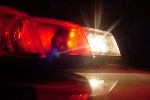
Taking Aim at Drugged Driving
Distracted driving has dominated the headlines, but two federal agencies are cooperating to combat another safety hazard: drugged driving.
- By Jerry Laws
- Aug 01, 2012
The websites of two federal agencies focused on safety featured an identical message on July 3: an announcement of their cooperation to combat drugged driving. Deborah A.P. Hersman, chair of the National Transportation Safety Board, and R. Gil Kerlikowske, director of the Office of National Drug Control Policy (ONDCP), wrote that drugged drivers are as dangerous as alcohol-impaired ones and cited the evidence from NHTSA's 2007 National Roadside Survey.
The survey, the first by NHTSA to estimate the use by drivers of potentially impairing drugs, along with alcohol. This 2007 survey found the percentage of drivers with measured blood alcohol concentrations above 0.08 on weekend nights had fallen sharply from the percentage measured in the initial NRS in 1973 -– down from 7.5 percent of drivers to 2.2 percent, according to a report on the 2007 survey from NHTSA's Traffic Safety Facts publication.
But the 2007 survey's findings on drugged driving were not as encouraging.
Participating drivers in 2007 were asked to provide an oral fluid and blood sample in addition to a breath sample, and the oral fluid and blood samples were tested for illicit drugs, prescription drugs, and over-the-counter medications. NHTSA reported 14.4 percent of nighttime drivers and 11.0 percent of daytime drivers were drug-positive on oral fluid tests, although not necessarily impaired. When oral fluid and blood test results were combined, 16.3 percent of the nighttime drivers were drug-positive.
NHTSA began a follow-up study to identify which drugs are associated with higher crash risk, and soon it published two more reports that are useful for understanding the scope of this problem.
First was a November 2010 analysis of drug test results for drivers fatally injured in 2005-2009. It indicated the percentage of those tested who were found to have drugs in their systems rose from 13 percent to 18 percent:
| Year |
Drivers Tested |
Drugs Reported |
Drugs Not Reported |
Results Unknown |
| 2005 |
15,363 |
3,710 (13%) |
9,614 (35%) |
2,039 (7%) |
| 2006 |
16,193 |
4,018 (15%) |
10,307 (38%) |
1,868 (7%) |
| 2007 |
16,676 |
4,214 (16%) |
10,679 (40%) |
1,783 (7%) |
| 2008 |
15,683 |
4,267 (18%) |
10,114 (42%) |
1,302 (5%) |
| 2009 |
13,801 |
3,952 (18%) |
8,103 (37%) |
1,746 (8%) |
Second was a Drugged Driving Expert Panel's report published in March 2011. The panel concluded drivers need better information about the extent to which medications and illegal drugs impair driving. Saying labels don't specify the degree of crash risk and thus don’t inform drivers or prescribers, the panel suggested developing a validated protocol for assessing the impairing effect, although its report noted that administering doses to test subjects at levels common in abuse could not be conducted ethically, and determining the extent to which tolerance diminishes driving impairment will be difficult.
"According to a survey by the National Highway Traffic Safety Administration, one in eight nighttime weekend drivers test positive for illegal drugs. More alarming -– one in three drivers with known test results who were killed in accidents tested positive for an illegal drug. Young people are also at risk. According to another study by the National Institute on Drug Abuse, one in eight high school seniors admit to smoking marijuana before driving," Hersman and Kerlikowske wrote in their statement. "The research is clear -– driving high slows reaction time, impacts judgment, and all too often leads to deadly consequences. So when people drive high, they don't just pose a threat to themselves, but to others with whom they share the road. Our agencies are committed to reducing drugged driving. The Office of National Drug Control Policy is working with states to help them pass zero tolerance laws when it comes to drugged driving. Already, 17 states have established per se laws, which means that any presence of an illegally used drug is a violation of the law. We are also working with law enforcement agencies to increase the number of law enforcement officers who are trained to detect the signs of drugged driving and are properly trained to identify impaired drivers.
"But our efforts don't end there. Last month, the National Transportation Safety Board hosted its first-ever forum examining the substance-impaired driving problem. Over the next several months, NTSB will be reviewing the information obtained during the forum and conducting additional research to identify the best recommendations for preventing future drug-related highway crashes, injuries, and deaths.
"Americans deserve fewer risks when taking to the roads and highways; parents should not fear that their children will become another teenage drugged driving statistic. We at the Office of National Drug Control Policy and the National Transportation Safety Board are steadfast in our mission to reduce this threat, and we hope that Americans will join us in raising public awareness regarding this challenge," they concluded.
Separately, the Federal Motor Carrier Safety Administration announced in June 2012 that 287 commercial bus and truck drivers were removed from the roads as a result of its annual drug and alcohol strike force sweep from April 30 through May 11, 2012. The sweep involved checks of the drug and alcohol safety records of commercial drivers to identify motor carriers in violation of federal drug and alcohol testing requirements and to remove drivers who move from carrier to carrier to evade drug and alcohol testing and reporting requirements, according to DOT.
(The National Roadside Survey of 2007 was a national field survey of alcohol- and drug-involved driving conducted among nighttime weekend drivers and daytime Friday drivers. The survey involved randomly stopping drivers at 300 locations across the continental United States -- a two-hour Friday daytime session at 60 locations and during four two-hour nighttime periods at 240 locations.)